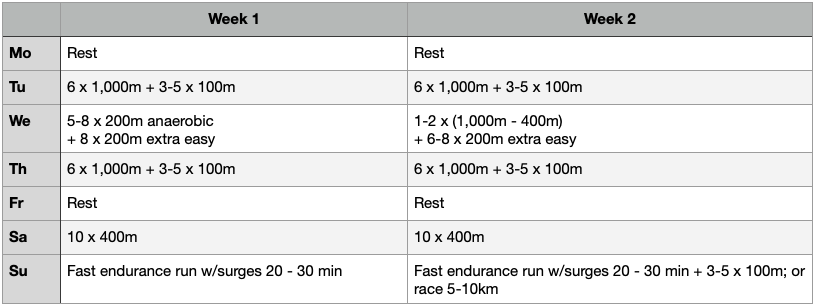Book Review: “Easy Interval Method” by Klaas Lok
That’s exactly what Mr. Lok is recommending … basically replacing your steady-state runs with relaxed interval sessions.
It sounds a little crazy, but this book (and training method) was recommended to me by a national champion masters runner who has adopted this training methodology to avoid injury and get more out of less miles – two huge benefits Mr. Lok claims this program delivers.
“Many masters runners who changed to this way of training reported that – after carefully building up and getting used to more mileage at higher speed – they have fewer injuries and perform better. It is widely accepted that it is not the aerobic system that declines so much with age as it is the ability and reactivity of the muscles. To keep that ability for as long as possible, we must train them in the appropriate way. Longer, slower, steady-state running only further reduces their natural reactivity and explosiveness.”
This method can be used for racing distances from 800m up to the half marathon.
From what I understand (please read the book for the details), the intervals range from 200m – 2,000m – and are run around at and around your lactate threshold, which you will have to determine. And this is critical, as one of the dangers of this program is running the intervals too fast. Mr. Lok does include a number of ways to determine this.
Depending on the pace of the intervals and distance scheduled, there will only be one hard effort each week. Research provided supports that recovery from a hard effort typically takes 1 week – and many traditional programs for more serious runners include two hard(er) sessions a week – not to mention a long run (which are also eliminated in this methodology).
The heart of the programs intervals are: 15x200m, 10x400m, 6×1,000m and 4×2,000. Recovery time is outlined in the book, but he stresses it is important to have an almost complete recovery in order to avoid training too much in the anaerobic zone. Jogging and walking are used for recovery.
Some medium length and slightly longer runs are also included (but probably much shorter than you might be used to) and usually include surges throughout to avoid any steady-state only running.
If you are training for a 5k, here’s what a typical two week schedule might look like:

That is a very different schedule than what I have been used to!
If this piques your interest, I recommend picking up the book ($20 on Amazon).
From my perspective, this type of training might be worth looking into if you are a very serious masters runner who races a lot – and has found that a combination of weekly long runs and super fast speed work can be taxing at times.
Sometimes I end up shifting my long runs to every other week – and often avoid really fast 200’s – because that is when I am prone to pulling a hamstring.
Mr. Lok says this program can be used for any type of runner, including beginners. But it does, to me anyway, lean toward a program that serious, race-focused runners might want to check out.
I enjoy running too much (in the woods and on the trails – yes, steady-state) and only focus on racing during a few months of the year – to adopt something like this full time.
Let me know what you think.
…


